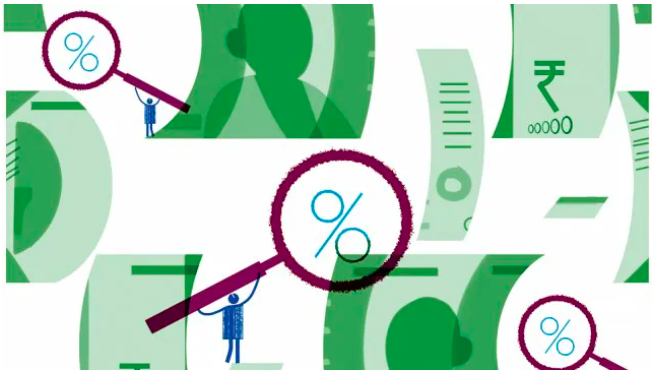Why The Budget Must Prioritize Incentives, Not Just Resources
Relevance: GS 3 – Indian Economy and issues relating to planning, mobilization, of resources, growth, development and employment; Inclusive growth and issues arising from it; Government Budgeting.
Why in the News?
- Corporate investment has remained stagnant despite tax cuts, indicating that availability of resources alone does not drive growth.
- Last year’s budget emphasized improving coordination with states, highlighting the need for a collaborative framework.
- Key focus areas include ensuring a stable food supply and simplifying business regulations to encourage growth.
- Despite the Centre’s claims of removing thousands of outdated laws, businesses report minimal improvement in ease of operations.
Macroeconomic Policy and Fiscal Challenges in India
Focus on Development and Reforms:
- Macroeconomic policy in India often emphasizes development and structural reforms to meet growth imperatives.
- Post-pandemic policies effectively smoothed external shocks, contributing to a robust recovery.
Current Slowdown and Spending Trends:
- Slowing government spending during election months is a key reason for the economic slowdown.
- As of November, the Centre spent only 46.2% of its capital expenditure target, compared to 58.5% at the same time last year.
- States utilized only ₹0.88 trillion of the ₹1.5 trillion allocated for capital expenditure.
Fiscal Policy Challenges:
- Countercyclical fiscal policy raises the debate: Should the government focus on increased spending or tax cuts?
- Fiscal consolidation remains critical as India’s combined fiscal deficit exceeds 7% of GDP, one of the highest globally.
- Interest payments account for 19% of the Centre’s expenditure, emphasizing the need for falling debt and deficit ratios to create fiscal space and reduce financial risks.
Improving Spending Quality:
- The slowdown in public investment, despite stable revenue expenditure, underscores the importance of better-quality spending.
- Increasing the share of public investment must remain a priority to provide economic stimulus.
- Enhancing spending efficiencies can release additional resources for public investment.
Incentives for State-Level Investments:
- Incentives, rather than just resources, are crucial to boosting investment.
- Conditionalities that have successfully increased states’ capital expenditure should be continued to sustain progress.
Investment and Consumption Trends in India
Stagnant Corporate Investment:
- Despite tax cuts, corporate investment remains low, indicating that resource availability alone does not spur growth.
- High growth and profits have increased the private corporate savings ratio from ~1% of GDP pre-1990s to 10.7% post-2005-06.
- However, private sector fixed capital formation peaked at 27.5% in 2007-08 and declined to an average of 21.5% during 2015-21.
Shift in Corporate Income:
- The share of corporate non-business income has increased fourfold.
- A potential budget measure could involve taxing non-business income while offering investment tax credits and employment-linked inducements.
Underutilized Savings:
- Domestic savings and foreign inflows are underutilized.
- Foreign inflows often exceed the current account deficit, highlighting that investment, rather than resource scarcity, is the primary constraint.
K-Shaped Recovery and Consumption Trends:
- The K-shaped recovery and demand constraints from consumption appear overstated.
- Independent and official surveys indicate strong consumption growth (8-9% last year, GDP data shows 7.3%), including recovery in lower-income groups.
Middle-Class Dynamics:
- India’s middle class, broadly defined, remains concentrated at the lower-income end.
- In 2021, 31% (432 million people) fell within the ₹5-31 lakh annual income bracket, forming the core FMCG market.
- Only 5% (60 million people) earned ₹8 lakh or more annually in 2023.
- Studies relying solely on income tax data, such as those by Piketty, may understate the true size of the middle class due to low income tax penetration.
Insights on Consumption, Taxation, and Agricultural Reforms
Corporate Strategies and Consumption Dynamics:
- Corporate premiumisation strategies focus primarily on the top-tier income groups, leading to slower demand growth.
- Poverty levels have fallen to 5%, and the mobility of the lower middle class offers opportunities for products tailored to price-sensitive groups.
- Income tax cuts for lower slabs can enhance spending faster than direct government expenditure, addressing inflation’s impact on real incomes and taxes.
Tax Reform Priorities:
- Simplification, closing loopholes, and broadening the tax base should remain the central focus of tax reforms.
Evolving Consumption Patterns:
- Food’s share in consumption has fallen below 50%, with processed foods taking the largest share, followed by dairy products.
- The cereal share has declined, while vegetable consumption has increased, highlighting a shift toward diversified diets.
Price Spikes and Food Supply Challenges:
- Disorganised vegetable supply chains have contributed to recent price spikes in the economy.
Progress in Agricultural Reforms:
- At the state level, 26 states have adopted reforms allowing private markets and direct farm gate sales, though only 14 have notified relevant rules.
- Measures to enhance agricultural supply chains and create a unified market are advancing.
- Research shows farmers who diversified production earned higher profits compared to those reliant on MSP sales.
Supporting Farmers:
- Easing the sale of diverse produce and strengthening supply chains are key actions states can take to improve farmer incomes and stabilize the agricultural economy.
Budget Priorities and Economic Considerations
Improved Coordination and Simplification:
- Last year’s budget emphasized better coordination with states, particularly in critical areas like food supply and regulatory simplification.
- While the Centre has repealed numerous archaic laws, challenges persist at local levels, where second- and third-tier government officials directly interact with businesses.
- States, driven by competition for Global Capability Centres (GCCs), are increasingly open to reforms.
Interest Rates and Demand Stimulation:
- With cost-push inflation easing, there is potential for interest rates to decrease, creating a powerful demand stimulus.
- Low real interest rates can encourage India’s young population to invest in housing and home equipment.
Resource Cost and Opportunity Cost:
- While resources are not a limiting factor, their cost and opportunity cost significantly impact economic outcomes.
- A shift from conservative macroeconomic policies is warranted, leveraging India’s size, economic diversity, and strategic agility, as demonstrated during the pandemic, to counter external shocks.
Focus on Production Conditions:
- Budget priorities must align with improving production conditions to increase output and reduce costs.
- Well-designed incentives, rather than mere allocation of resources, are essential to achieve desired economic results.
Strategic Budget Design:
- Policymaking should move away from outdated thinking and focus on stimulating growth through innovative and strategically tailored measures.
Source:
Mains question
Discuss the significance of regulatory simplification and low real interest rates in fostering economic growth and addressing structural challenges in India’s post-pandemic recovery phase. (250 words)





